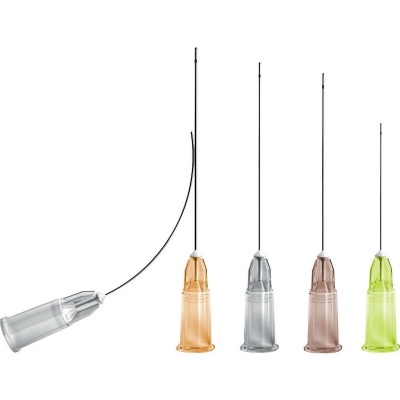Microcannules

The microcannula is a kind of needle, but with one fundamental difference, it has no point. The hole through which the product is released is on the side thus having a “pink” tip.
Its characteristic allows it not to tear the tissues so as not to cause damage to the vessels and tissues. The microcannula, by tracing the path of the area to be filled, will release the product on the way back. That is, when leaving, the cannula is leaving the desired region filled.
The amount of product, whether permanent as PMMA (polymethyl methacrylate) or absorbable as hyaluronic acid, calcium hydroxyapatite, or polylactic acid, released through the orifice, will only depend on the pressure on the plunger and the length of time the cannula remains. on site. Mastery of the technique is very important as the implant should be well distributed and evenly distributed.
We currently have different sizes of microcannulas, different thicknesses and lengths that vary according to the place to be implanted as well as the product to be used.
We have dozens of fillers and hundreds of makes and models on the market. Not only doctors but also patients need to be aware of the products available. Each has its own specific characteristics, density, texture, hardness, acting time, scratches and care.
The importance of the use of these microcannulas has been observed every day to prevent bruising (purples), edema, less trauma and, consequently, greater safety, especially in the face of possible vascular trauma with vascular obstruction (a rare but feared complication). doctors who work with fillers). What can be avoided with the use of microcannulas.
